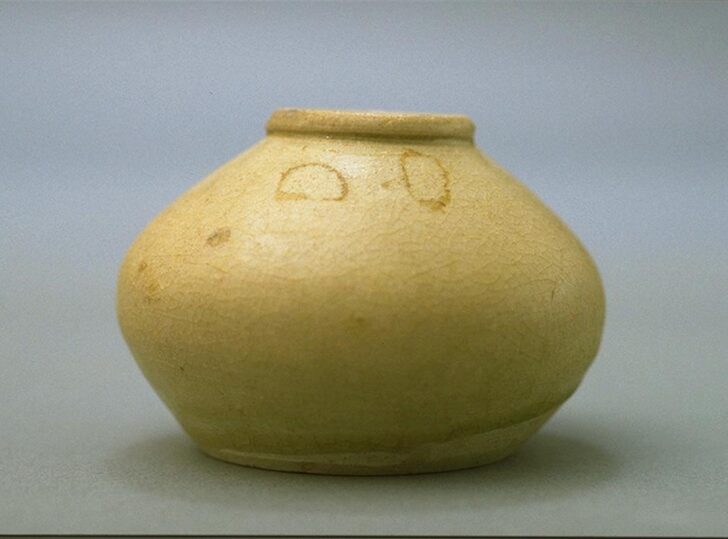Jarlet with squat ovoid shape
Kiln Unknown, Vietnam

Description
March 28, 2009
Maritime trade between Southeast Asia and China was well established by the third century BCE, many centuries before European merchants arrived in the early sixteenth century. In this region, early summer monsoon winds promised vessels an easy voyage from the southwest, and fall winds brought them back to the original ports. There was also an abundance of timber suitable for shipbuilding, and many small harbors provided ideal spots for coasting by small vessels. One of the most important trade commodities was ceramics from China, which were exchanged for spices, plants, timbers, minerals, pearls, and sea products. As demand for Chinese ceramics increased in the fourteenth century, Thai and Vietnamese kilns began to produce less expensive trade ceramics. These two jarlets were made in Vietnam for markets in the southern islands (modern Philippines and Indonesia) to store oils. Imported stonewares such as these were often buried with the dead.
(Label for UMMA South and Southest Asia Gallery Opening Rotation, March 2009)
Subject Matter:
A miniature jar.
Physical Description:
A small jar of squat proportions with short, vertical neck and a pale yellow, crackled glaze. This jar is very similar to 2002/2.20, also in UMMA collections.
Usage Rights:
If you are interested in using an image for a publication, please visit https://umma.umich.edu/request-image/ for more information and to fill out the online Image Rights and Reproductions Request Form.